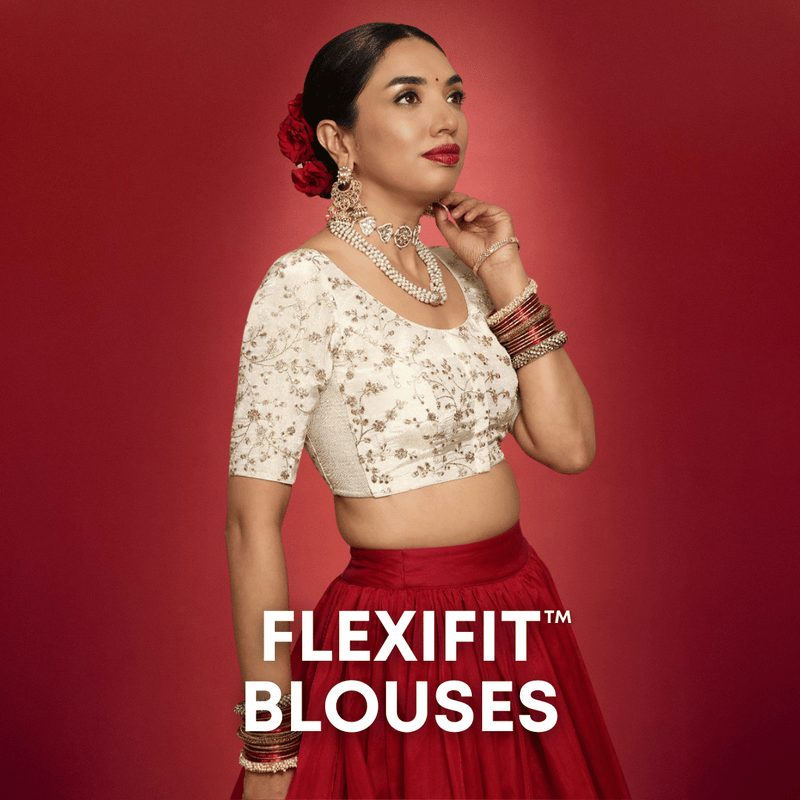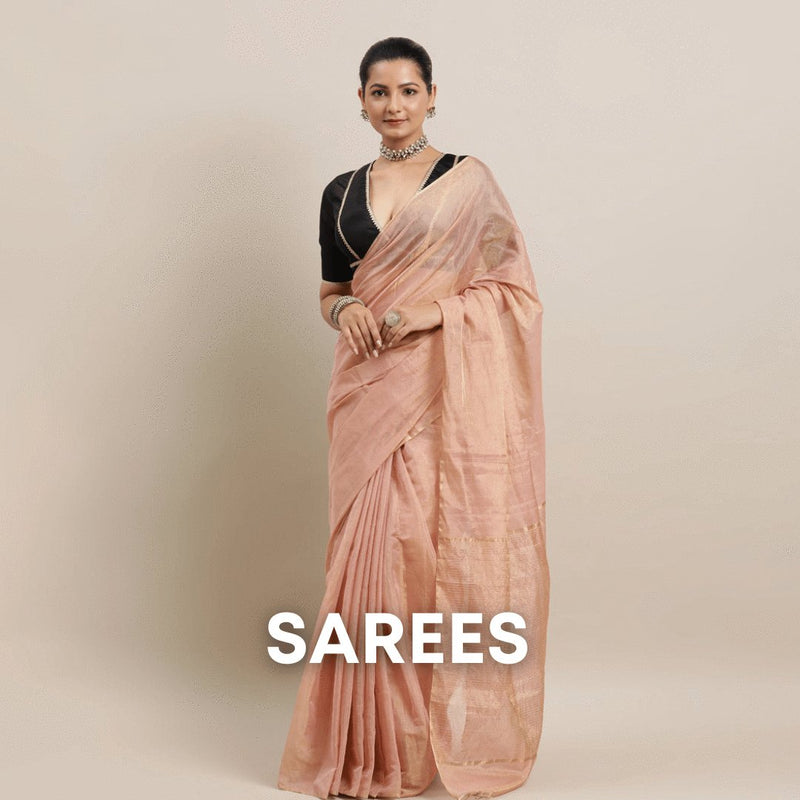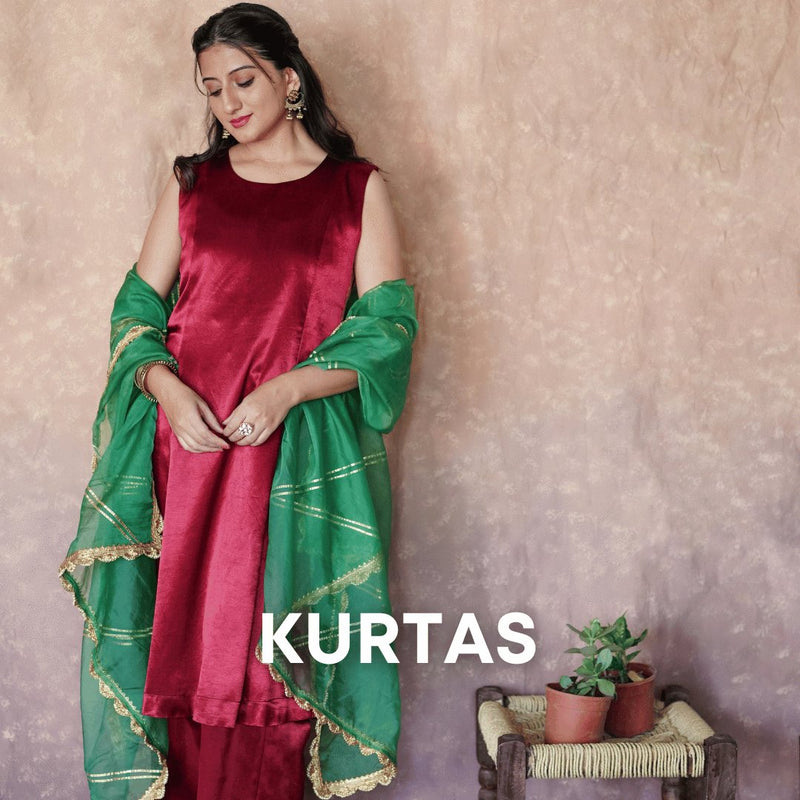Saree stands out as a timeless symbol of elegance and versatility in traditional Indian attire. It is more than just a piece of clothing, it embodies deep emotions. Saree is a part of our culture, our history, and our lineage. Whether it's a wedding, a party, or any special occasion, there's a saree draping style suitable for every event. It's the ultimate multitasker! From adding a dash of drama to your daily grind to stealing the show at weddings, saree does it all.
From classic drapes to contemporary Palazzo style draping, saree offers numerous ways to be worn. It is this versatility of saree that has kept it trending even today, despite being a millennial old attire!
Read along to explore the different types of saree drapes and modern saree draping style to elevate your saree game with ease and elegance.

The Beauty of Saree Styling
The best part of a saree is that you can style it in a dozen different ways and slay every time. One saree can give you so many looks with different saree draping styles, so you’ll never feel like you are repeating an outfit.
Make A Fashion Statement With 10 Unique Saree Draping Styles
Here are the 10 latest different types of modern and traditional best saree draping styles for Women:
-
The Mumtaz Saree Draping
You must have seen Mumtaz in the gorgeous orange saree in ‘bindiya chamkegi’ song. The draping style was so loved by everyone, it became popular as the mumtaz saree style. This look was recreated by many designers and fashion influencers and is one of the most iconic saree drapes of all time. You too can create this look with any saree you have, preferably one with a gota border.
-
Classic Nivi Saree Style
This is the most common style of saree draping, that we can see in our homes, festivals, and even in bollywood movies. In this style, the pallu goes to the back, while pleats are formed in the front of the saree. Though common, this saree drape style looks absolutely gorgeous, giving you the ‘desi girl’ vibes.
-
Lehenga Saree Style
Looking for new ways of draping a saree? Lehenga style or ghagra style drapes are a popular choice for weddings, diwali parties, or for newly-wed brides. It resembles a lehenga-choli, hence the name, and it looks very royal and elegant.
It is very easy to drape, and it looks the best with heavy sarees like crepe silk, Kanjivaram, and Banarasi saree. To wear lehenga saree styling, begin by wearing the petticoat or lehenga, ensuring it fits snugly at the waist. Start draping the saree around it, forming one pleat next to the other pleat, going the entire way around the waist. Now pleat and arrange the pallu like a dupatta, draping it over one shoulder. You can tuck the end of the pallu to your waist or just let it fall freely.

-
Bengali Saree Draping
Bengali saree wearing style is very popular, and is often worn around durga puja and dussehra. This drape style involves multiple pleats at the waist, giving it a rich look. Start with creating multiple small pleats at the waist and tucking them in securely. Now bring the pallu from back to front over the left shoulder, leaving some part of the pallu to form a curve at the back, and secure it with a pin.
Also check out women kurta sets from Binks to add a touch of elegance and glam to your wardrobe.
-
Nauvari Saree Draping
This is commonly known as the maharashtrian style of draping, this nine yard saree has a long history of feminism and patriotism. This saree styling was first used by women of the maratha empire, for the ease of movement in warfare. This traditional saree draping style can still be seen in Maharashtra and many parts of India.
To tie this, start by tucking one end of the saree at the back and create multiple pleats in the front. Wrap the remaining fabric around the legs, resembling a dhoti, and secure it at the waist. You are ready to rock in a completely distinguished style.
-
Dhoti Style Saree Draping
Dhoti style saree drape is becoming more popular amongst youngsters because of its unrestricted ease of movement. This drape resembles a dhoti, which is worn by men. It is almost draped similarly, with pleats created at the waist and draped like trousers. Additionally, just take one end of the saree to form a pallu. Dhoti style saree can be worn with blouse, tops, and even short kurtis.
-
Palazzo Saree Draping
This is an indo western look, and looks amazing for haldi, mehndi or sangeet functions. It adds a dash of style to your entire outfit. This is a modern saree draping style. To tie this, wear a palazzo instead of a petticoat. You can use a ruffled palazzo for a cute look. Now take a dupatta and pleat it entirely. Tuck one end of the dupatta to the left side of your waist and bring it to the right side from behind. Now secure the pallu on the left shoulder with a pin. You are ready to bedazzle everyone.
If draping a saree is not your cup of tea, you should check out 1-minute Sarees from Binks.

-
Scarf Style Saree Draping
Among the different types of saree drape, this formal style steals the show. This style is very formal and can be worn for meetings, formal events, and office parties. It resembles a scarf draped around the neck, hence the name. To tie this, start draping your favourite saree in traditional saree draping style. Now take the pallu, wrap it around your neck in a clean manner, and pin the remaining fabric in the front, making a v-shape. It looks best with blazers or coats.
-
Contemporary Saree Draping
Contemporary saree draping style is the fashion equivalent of writing a free-verse poem. There are no rules or techniques. You can use your own imagination to drape the saree in a unique way. Contemporary saree draping is generally intended for a modern look, and satin, georgette or net fabrics work best with it. You can add a dupatta to give a double pallu look, or drape the pallu as a cape on the shoulders.
-
Back Pleat Saree Draping
This saree draping style is popular amongst the youth, which you might have seen in bollywood movies as well. This drape looks amazing for ceremonies like weddings, engagement parties, pooja, and festivals. You can tie this with any saree, but we would recommend trying this drape with silk or satin saree. Start with tucking on the end of the saree in your petticoat, like you would usually do. Now bring the saree to the back and start pleating. Tuck these pleats in the back, and bring the rest of the fabric in front, as a pallu. You can finish the look by adding a belt on your waist.
Conclusion
Now that you know these different ways of wearing a saree, and we have given you saree draping methods for each style, you can flaunt the ethnic look for any occasion.
Check out Binks for the most glamorous sarees that will make you the centre of attention in any room. We, at Binks, offer a premium range of women’s ethnic clothing including readymade blouses and others, that are sustainable, affordable, and beautiful at the same time.
FAQs on Saree Draping Styles
-
How does saree draping style define your style?
Saree offers the versatility and freedom to express your personal style with different drapes. You can choose from traditional saree draping styles to more contemporary styles, depending on your mood and occasion.
-
Which saree style is best?
There is no definite answer to this question, but depending on the occasion, your role, and your mood, you can switch between any draping styles.
-
How to style silk saree?
A silk saree can be styled in a traditional way by wearing it in classic style, lehenga style or mumtaz style. For a more modern look, you can style a silk saree in scarf style drape.
-
Which saree is most comfortable?
If you know how to drape a saree, every draping style will be comfortable for you. However, if you want a range of motion, dhoti style drapes are the best choice.
-
What are the different styles of wearing sarees?
There are many different saree draping styles, like back pleats drape, mumtaz drape, scarf-style drape, and lehenga style drape, to name a few. You can read the blog to find 10+ ways to style a saree.




